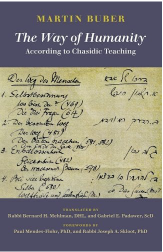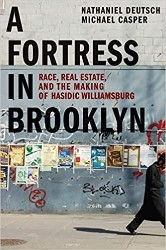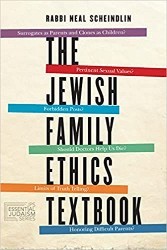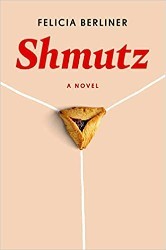A comment by the Kotzker Rebbe quoted by Zalman Schachter-Shalomi and referred to by others, can serve well as the common denominator of the presentations by Hillel Zeitlin, Martin Buber, Abraham Joshua Heschel, Sholomo Carlebach, Schachter-Shalomi, and Arthur Green included in this collection:
If I am I because I am I, and you are you because you are you, then I am I and you are you. But if I am I because you are you, and you are you because I am I, then I am not I and you are not you.
All of these men, due to their distinctive personalities as well as the vagaries of their personal and communal histories, broke away to various extents from their previous lifestyles. They refused to take on the roles that were imposed upon them by others, including parents and mentors, and instead became innovators and pioneers in what the editors refer to as “neo-Hasidism.” Several of these expositions have never been published previously, some are based upon private transcripts, and therefore should hold special interest for scholars as well as casual readers.
Hasidism, at least at its inception according to the teachings of Rabbi Yisrael ben Eliezer, also known as Ba’al Shem Tov, is described by the editors as a deeply revolutionary, enthusiastic, pointedly intentional, “service of the heart,” mystical, religious movement.
In eighteenth-century Europe, where Hasidism originated and proved to be wildly popular, the movement served as a response to what was perceived as the “dry as dust” Judaism that had held sway for centuries. Another similar sort of revolution, like “neo-Hasidism,” became necessary in the minds of some, when the American Jewish experience that had become dominant following the Holocaust was sharply critiqued for its increasing “hyper-institutionalization and formality of its synagogues” and “its intellectual small-mindedness, its rote or perfunctory approach to religious service, and its failure to recognize the paramount importance of the inner world.” Furthermore, Arthur Green, the most contemporary of the five thinkers included in this volume, writes regarding traditional ritual observance: “…the image of master and servant is as dead as that of father and child…Compulsive or legalistic attitudes toward ritual we will of course find repulsive; ritual must help us to be more free, not bind us.”
Mentioned a number of times throughout the book is the discomfort of the latter-day thought leaders of “neo-Hasidism” with aspects of Judaism that, though are well represented in traditional texts, nevertheless constitute marked disconnects with modern sensibilities, i.e., discrimination against women, dismissal of members of the LGBTQ community, the exclusion of non-Jews, a negative attitude towards ecumenical initiatives that include other religious groups, and hostility towards mystical, drug-induced, psychedelic experiences. Furthermore, reading these texts strongly imply that disagreements such as these have served as a springboard and even justification of increasing ritual non-observance, and a radical redefinition of what “God” means to the contemporary religious seeker, compared to Hasidim of old.
While “neo-Hasidism” may continue the revolutionary trajectory that Ba’al Shem Tov introduced several hundreds of years ago, upon reading these works, one might ask: at what point, if any, may a “tipping point” be reached when referring to what one believes as a form of Hasidism? When will it constitute as an instance of cultural appropriation rather than a continuing historical trend taking on a fresh and relevant form?
____
A New Hasidism: Branches contains a number of essays regarding implications and applications of various aspects of “Neo-Hasidism” by authors who represent different levels of formal Jewish observance. Contributions I find exceptionally engaging include an essay by Nehemia Polen regarding spiritual dimensions of Leviticus, Ariel Evan Mayse’s discussion of the Halachic process from a Neo-Hasidic perspective, an overview of Shlomo Carlebach’s life and work by Shaul Magid, an interview with Haviva Pedaya regarding parallels and differences between Mizrachi and Ashkenazi mysticism, and a cri de coeur by Elhanan Nir as to the state of spiritual studies in contemporary Israeli post-secondary yeshivot.
Two aspects of this book’s discussion of Neo-Hasidism are particularly striking. First, a number of contributors readily admit they have “translated” Hasidism’s original assumptions to presently consist of “a devotion to the inner world, a life of the spirit that is expressed through actions, but also through the inward glance.” In and of itself, such a renewed emphasis upon inwardness and reflection is appropriate for all practitioners of Judaism, including those who consider themselves Orthodox in observance. However, these authors mention how they are careful to apply “mindfulness,” i.e., meditation, to their practice, with James Jacobson-Maisels stating that his “mindfulness practice … is profoundly based on Western Buddhist [italics added] mindfulness practice and theory.” While Jacobson-Maisels attempts to demonstrate how such an approach can be justified by citing various Jewish sources, and I understand how ecumenical sharing and joint study of many religious traditions can lead to better understanding and cooperation among the adherents of these devotional groups, will such overt religious syncretism inevitably change Judaism into something that, while inspiring these particular practitioners, is a discipline at odds with Jewish tradition in general, and Hasidism in particular?
A second issue that left me with more questions than answers concerns an essay by Or N. Rose, “A Textual Exploration and Theological Response.” In this book’s volume’s companion volume, A New Hasidism: Roots, it is pointed out numerous times that the Zohar’s and seminal Hasidic rabbis’ negative attitudes towards non-Jews was one of the reasons why present-day Jews felt that they had to forsake Hasidism and innovate Neo-Hasidism. Rose sets out to demonstrate the legitimacy of a point of view more favorable to non-Jews in terms of traditional Jewish sources, but concludes that he could only point to Zalman Shachter-Shalomi and Abraham Joshua Heschel as demonstrating that such a position was acceptable. Leaning too heavily on examples of personal philosophy rather than text makes for a tenuous argument in light of the numerous references and even entire essays in this book devoted to the potential dangers of the “rebbe,” a charismatic individual who serves as the single “center” of a devotional community. Again, I am sympathetic to the idea that Judaism ought to be more welcoming to non-Jews in principle, but am disappointed that more solid evidence to support such a departure from traditional practice isn’t offered in this volume.
A New Hasidism: Branches presents a stimulating exploration of the many facets of the present-day evolution of Neo-Hasidism in the United States and Israel. It is highly recommended to those interested in Jewish theology and contemporary religious developments.





